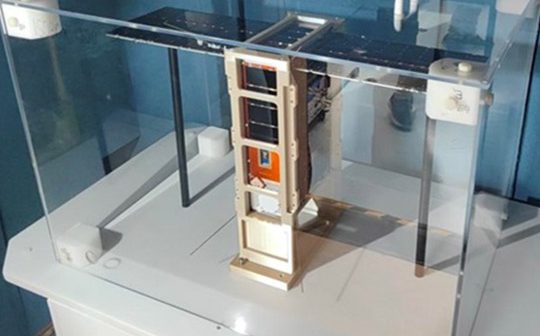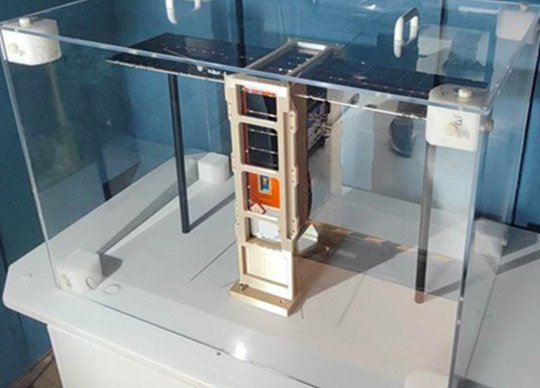
South Australian satellite, Kanyini, has achieved another key milestone with the successful completion of its Environmental Stress Screening (ESS) ahead of the satellite’s mid-2024 launch.
The critical ESS testing was conducted at the National Space Test Facility at the Australian National University in Canberra.
The robust testing verifies the satellite’s ability to withstand the rigours of space by exposing it to the harsh physical and environmental conditions it is expected to encounter over its operational life.
Fully manufactured in Adelaide’s Lot Fourteen, Kanyini underwent two weeks of challenging trials including exposing the satellite to extreme temperature variations, intense vibrations, and crushing vacuum conditions. The satellite remained fully operational throughout the extensive testing, passing the screening with flying colours.
With Kanyini’s full System Integration Review also concluded, the successful completion of this testing now sees the wholly South Australian-based mission team embarking on the final manufacturing phase in readiness for launch.
The launch of Kanyini marks a pivotal step for the South Australian space sector, set to build space heritage for local satellite manufacturing, Internet of Things (IoT) and mission lead capabilities – a fundamental requirement for success in the global space sector.
Once in orbit, Kanyini’s dual IoT and imager payloads will deliver critical space data to be used by government and research institutions to expand their knowledge, particularly in relation to sustainability and climate impacts.
The enhanced onboard processing capability of the Hyperscout 2 imager, together with advanced Artificial Intelligence algorithms, enables smart processing of data directly in orbit, supporting rapid decision-making for time-critical applications such as smoke detection for bushfires and a range of other services.
The Kanyini mission is a collaboration between the South Australian Government, the SmartSat Cooperative Research Centre as mission lead, Adelaide-based commercial satellite manufacturer Inovor Technologies, and global IoT provider Myriota.
Kanyini will be launched onboard SpaceX’s Transporter-11 mission from Vandenberg Space Force Base in California, USA.
“The Kanyini build is a remarkable example of South Australian space industry collaboration and expertise driving major advances in local capability. The successful completion of this critical milestone brings us one step closer to realising our mission of seeing home grown South Australian space technologies launched into low Earth orbit,” said Susan Close. “We are excited about the possibilities that Kanyini holds both in terms of building space heritage for South Australian space companies and the information it will provide to benefit our communities and services here in South Australia.”
“In reaching this milestone, Kanyini has already achieved one of our key goals for the mission – building the capacity of the Australian space industry and advancing the local expertise within the sector. Once launched, Kanyini will unlock even more opportunities for research and development of innovative, sovereign Australian technologies,” said Kanyini Mission Director Peter Nikoloff. “The collaborative effort from the whole mission team, including SmartSat CRC and our partners Myriota and Inovor Technologies, as well as the support from the South Australian Government, has been outstanding up until now. With all the payloads integrated and having passed this rigorous testing phase, Kanyini is on track for a successful mission.”
“The stellar results from the ESS not only validate the meticulous testing processes we’ve implemented but also exemplify the steady commitment of our team in producing world class technology,” said Inovor founder and CEO Dr Matt Tetlow. “Our satellite bus technology is robust, resilient and ready to pioneer the next frontier of space-based applications. Our team has worked very hard over the past few years and is excited about the impact our technology will make in advancing Earth observation capabilities.”
“This milestone advances our mission and also positions South Australia at the forefront of the national space industry. Collaboration with partners SmartSat CRC and Inovor Technologies has been key in leveraging home-grown expertise,” said Myriota CTO and co-founder Dr David Haley. “Once launched, Kanyini will enhance the Myriota Network and facilitate critical IoT sensing worldwide, addressing issues such as water quality, crop health and bushfire resilience. Myriota is deeply rooted in South Australia and our dedicated 70-person team eagerly looks forward to Kanyini’s launch.”
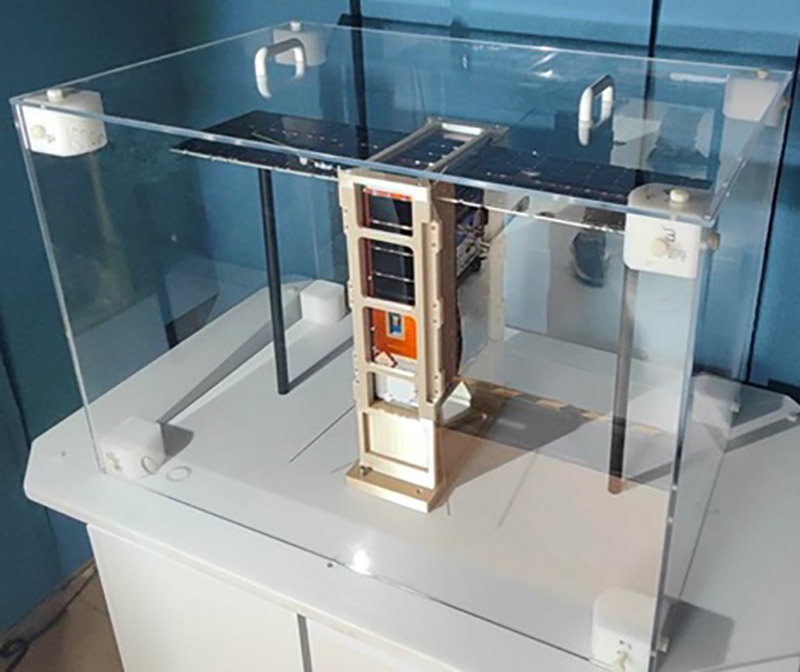
Kanyini Satellite prepared for testing.
Image 2 – Members of the Kanyini Mission team, including engineers from SmartSat CRC, Inovor and Myriota, load Kanyini into the Thermal and Vacuum Space Simulation chamber at Australian National University (ANU).
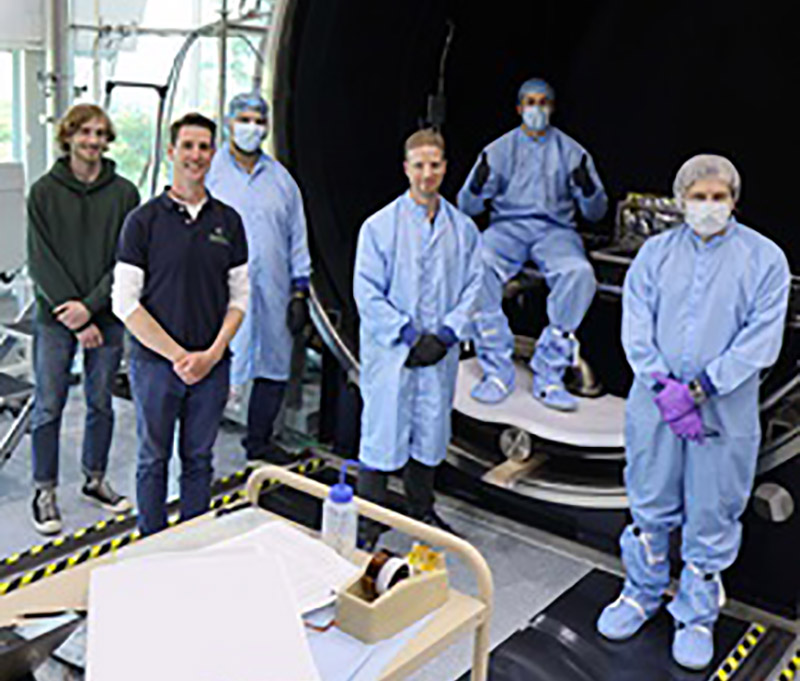
Members of the Kanyini Mission team, including engineers from SmartSat CRC, Inovor and Myriota, load Kanyini into the Thermal Vacuum Space Simulation chamber at the National Space Test Facility. From left to right: Sam Brown, Spacecraft Software Engineer (Inovor), Nick Manser, Satellite Systems Engineer (SmartSat CRC), Daniel Esparon, Electrical Engineering Lead (Inovor), Andrew Shuard, Principal Satellite Engineer (Myriota), Dan Schoell, Systems Engineering Lead (Inovor) and Eduardo Trifoni, Director of the National Space Test Facility (ANU).
Image 3 –
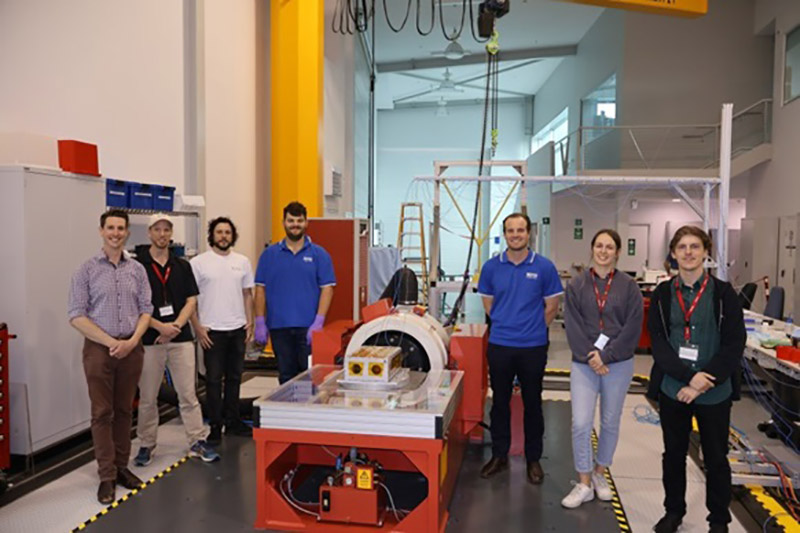
Kanyini ready for Vibration and Shock testing on ANU’s Electrodynamic shaker with the Kanyini Mission team. From left to right: Nick Manser, Satellite Systems Engineer (SmartSat CRC), Andrew Shuard, Principal Satellite Engineer (Myriota), Raffaele Lacobelli, Spacecraft Software Engineer (Inovor), Daniel Esparon, Electrical Engineering Lead (Inovor), Luke Air, Mechanical Engineering Engineer (Inovor), Nadia Sarunic, Systems Engineer (SmartSat CRC/Nova Systems), Andrew Meldrum, Space & Mission Engineer (Myriota).
Image credit: National Space Test Facility and Australian National University.

